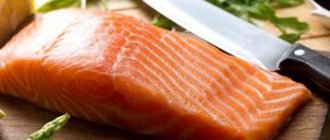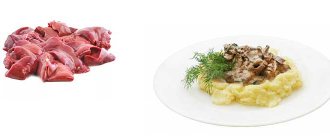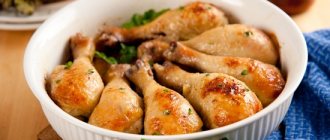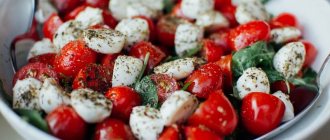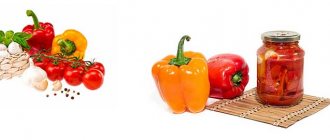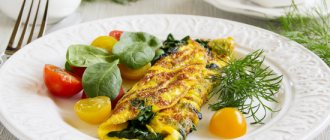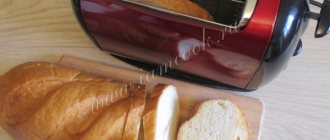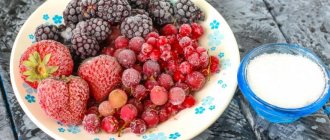Boiled beans (100g) – burn calories
| Property | Meaning |
| Calorie content, kcal | 127 |
| Proteins, g | 8,67 |
| Carbohydrates, g | 22,8 |
| Fats, gr | 0,5 |
Red Beans (with Salt, Boiled) contain the following elements: SFA - Saturated fatty acids, MUFA - Monounsaturated fatty acids, PUFA - Polyunsaturated fatty acids, Sodium, Potassium.
Boiled red beans (Kidney) contain 22.8 g of carbohydrates per 100 g of product, which is approximately 69% of the total energy from a serving or 91 kcal. Calorie content - 127 kcal. Ingredients of boiled red kidney beans:
fats - 0.50 g, proteins - 8.67 g, carbohydrates - 22.80 g, water - 66.94 g, ash - 1.09 g.
Total sugar content - 0.3 g, fiber - 6.4 g, starch - n/a.
Cholesterol content - 0.0 mg, trans fats - 0.0 g.
Green beans
And now we will touch upon the topic of a real record holder, a product that is the main product in terms of its beneficial properties. This giant of the food and nutrition industry is, of course, green beans. Boiled calorie content is low - only 24 kcal. By eating it, it is very easy to remain with a full stomach and at the same time lose weight, because when you include dishes with such a low amount of calories in your diet, the deficit necessary for weight loss will be created.
What are green beans? It is harvested when the beans are still at the stage of milk maturity, at the very initial stage of pod formation. The beans remain tender and soft and can be eaten right in their green shell. In addition, it contains useful vitamin K, which is often deficient in the body. But it is responsible for healthy blood clotting and reduces the risk of thrombosis.
Vitamins
Of the fat-soluble vitamins, boiled red Kidney beans contain E and K. Of the water-soluble vitamins, there are vitamins C, B1, B2, B3 (PP), B4, B5, B6 and B9.
>»> >»> >»> >»> >»> >»> >»> >»> >»> >»> >»> >»> >»> >»> >»> >»> >»>
| Vitamins, content | Share of daily value per 100 g | |
| Vitamin A | 0.0 µg | 0,0% |
| Beta carotene | 0.0 µg | 0,0% |
| Alpha carotene | 0.0 µg | 0,0% |
| Vitamin D | 0.0 µg | 0,0% |
| Vitamin D2 | n/a | 0,0% |
| Vitamin D3 | n/a | 0,0% |
| Vitamin E | 0.0 mg | 0,2% |
| Vitamin K | 8.4 mcg | 7,0% |
| Vitamin C | 1.2 mg | 1,3% |
| Vitamin B1 | 0.2 mg | 13,3% |
| Vitamin B2 | 0.1 mg | 4,5% |
| Vitamin B3 | 0.6 mg | 3,6% |
| Vitamin B4 | 30.5 mg | 6,1% |
| Vitamin B5 | 0.2 mg | 4,4% |
| Vitamin B6 | 0.1 mg | 9,2% |
| Vitamin B9 | 130.0 mcg | 32,5% |
| Vitamin B12 | 0.0 µg | 0,0% |
Calorie content Boiled red beans. Chemical composition and nutritional value.
Nutritional value and chemical composition of “Boiled red beans”.
The table shows the nutritional content (calories, proteins, fats, carbohydrates, vitamins and minerals) per 100 grams of edible portion.
| Nutrient | Quantity | Norm** | % of the norm in 100 g | % of the norm in 100 kcal | 100% normal |
| Calorie content | 123 kcal | 1684 kcal | 7.3% | 5.9% | 1369 g |
| Squirrels | 7.8 g | 76 g | 10.3% | 8.4% | 974 g |
| Fats | 0.5 g | 56 g | 0.9% | 0.7% | 11200 g |
| Carbohydrates | 21.5 g | 219 g | 9.8% | 8% | 1019 g |
| Alimentary fiber | 12.4 g | 20 g | 62% | 50.4% | 161 g |
| Water | 14 g | 2273 g | 0.6% | 0.5% | 16236 g |
| Ash | 3.6 g | ~ | |||
| Vitamins | |||||
| beta carotene | 0.01 mg | 5 mg | 0.2% | 0.2% | 50000 g |
| Vitamin B1, thiamine | 0.5 mg | 1.5 mg | 33.3% | 27.1% | 300 g |
| Vitamin B2, riboflavin | 0.18 mg | 1.8 mg | 10% | 8.1% | 1000 g |
| Vitamin B4, choline | 96.7 mg | 500 mg | 19.3% | 15.7% | 517 g |
| Vitamin B5, pantothenic | 1.2 mg | 5 mg | 24% | 19.5% | 417 g |
| Vitamin B6, pyridoxine | 0.9 mg | 2 mg | 45% | 36.6% | 222 g |
| Vitamin B9, folates | 90 mcg | 400 mcg | 22.5% | 18.3% | 444 g |
| Vitamin C, ascorbic acid | 4.5 mg | 90 mg | 5% | 4.1% | 2000 g |
| Vitamin E, alpha tocopherol, TE | 0.6 mg | 15 mg | 4% | 3.3% | 2500 g |
| Vitamin H, biotin | 0.5 mcg | 50 mcg | 1% | 0.8% | 10000 g |
| Vitamin K, phylloquinone | 6 mcg | 120 mcg | 5% | 4.1% | 2000 g |
| Vitamin RR, NE | 6.4 mg | 20 mg | 32% | 26% | 313 g |
| Niacin | 2.1 mg | ~ | |||
| Macronutrients | |||||
| Potassium, K | 1100 mg | 2500 mg | 44% | 35.8% | 227 g |
| Calcium, Ca | 150 mg | 1000 mg | 15% | 12.2% | 667 g |
| Silicon, Si | 92 mg | 30 mg | 306.7% | 249.3% | 33 g |
| Magnesium, Mg | 103 mg | 400 mg | 25.8% | 21% | 388 g |
| Sodium, Na | 40 mg | 1300 mg | 3.1% | 2.5% | 3250 g |
| Sera, S | 159 mg | 1000 mg | 15.9% | 12.9% | 629 g |
| Phosphorus, P | 480 mg | 800 mg | 60% | 48.8% | 167 g |
| Chlorine, Cl | 58 mg | 2300 mg | 2.5% | 2% | 3966 g |
| Microelements | |||||
| Aluminium, Al | 640 mcg | ~ | |||
| Bor, B | 490 mcg | ~ | |||
| Vanadium, V | 190 mcg | ~ | |||
| Iron, Fe | 5.9 mg | 18 mg | 32.8% | 26.7% | 305 g |
| Yod, I | 12.1 mcg | 150 mcg | 8.1% | 6.6% | 1240 g |
| Cobalt, Co | 18.7 mcg | 10 mcg | 187% | 152% | 53 g |
| Lithium, Li | 2 mcg | ~ | |||
| Manganese, Mn | 1.34 mg | 2 mg | 67% | 54.5% | 149 g |
| Copper, Cu | 580 mcg | 1000 mcg | 58% | 47.2% | 172 g |
| Molybdenum, Mo | 39.4 mcg | 70 mcg | 56.3% | 45.8% | 178 g |
| Nickel, Ni | 173.2 mcg | ~ | |||
| Rubidium, Rb | 43.5 mcg | ~ | |||
| Selenium, Se | 24.9 mcg | 55 mcg | 45.3% | 36.8% | 221 g |
| Strontium, Sr | 15 mcg | ~ | |||
| Titanium, Ti | 150 mcg | ~ | |||
| Fluorine, F | 44 mcg | 4000 mcg | 1.1% | 0.9% | 9091 g |
| Chromium, Cr | 10 mcg | 50 mcg | 20% | 16.3% | 500 g |
| Zinc, Zn | 3.21 mg | 12 mg | 26.8% | 21.8% | 374 g |
| Zirconium, Zr | 16.2 mcg | ~ | |||
| Digestible carbohydrates | |||||
| Starch and dextrins | 43.8 g | ~ | |||
| Mono- and disaccharides (sugars) | 3.2 g | max 100 g | |||
| Glucose (dextrose) | 0.06 g | ~ | |||
| Sucrose | 1.44 g | ~ | |||
| Essential amino acids | |||||
| Arginine* | 1.12 g | ~ | |||
| Valin | 1.12 g | ~ | |||
| Histidine* | 0.57 g | ~ | |||
| Isoleucine | 1.03 g | ~ | |||
| Leucine | 1.74 g | ~ | |||
| Lysine | 1.59 g | ~ | |||
| Methionine | 0.24 g | ~ | |||
| Methionine + Cysteine | 0.43 g | ~ | |||
| Threonine | 0.87 g | ~ | |||
| Tryptophan | 0.26 g | ~ | |||
| Phenylalanine | 1.13 g | ~ | |||
| Phenylalanine+Tyrosine | 1.76 g | ~ | |||
| Nonessential amino acids | |||||
| Alanin | 0.87 g | ~ | |||
| Aspartic acid | 2.46 g | ~ | |||
| Glycine | 0.84 g | ~ | |||
| Glutamic acid | 3.13 g | ~ | |||
| Proline | 1.57 g | ~ | |||
| Serin | 1.22 g | ~ | |||
| Tyrosine | 0.63 g | ~ | |||
| Cysteine | 0.19 g | ~ | |||
| Saturated fatty acids | |||||
| Saturated fatty acids | 0.2 g | max 18.7 g | |||
| Polyunsaturated fatty acids | |||||
| Omega-3 fatty acids | 0.21 g | from 0.9 to 3.7 g | 23.3% | 18.9% | |
| Omega-6 fatty acids | 0.178 g | from 4.7 to 16.8 g | 3.8% | 3.1% |
The energy value of boiled red beans is 123 kcal.
Primary Source: Created in the application by the user. Read more.
** This table shows the average levels of vitamins and minerals for an adult. If you want to know the norms taking into account your gender, age and other factors, then use the “My Healthy Diet” application.
Mineral composition
The ratio of mineral substances (macro- and microelements) contained in boiled red Kidney beans is presented in the table using diagrams.
>»> >»> >»> >»> >»> >»> >»> >»> >»> >»> >»>
| Minerals, content | Share of daily value per 100 g | |
| Calcium | 35.0 mg | 3,5% |
| Iron | 2.2 mg | 22,2% |
| Magnesium | 42.0 mg | 10,5% |
| Phosphorus | 138.0 mg | 19,7% |
| Potassium | 405.0 mg | 8,6% |
| Sodium | 1.0 mg | 0,1% |
| Zinc | 1.0 mg | 9,1% |
| Copper | 0.2 mg | 24,0% |
| Manganese | 0.4 mg | 18,7% |
| Selenium | 1.1 mcg | 2,0% |
| Fluorine | n/a | 0,0% |
Benefit for health
Beans contain a fairly high percentage of protein: 6–8 g per 100 g, pods - about 1.5 g. It is absorbed quite completely. In addition, this product, beloved by many people, contains a valuable set of vitamins (including nicotinic acid and carotene) and microelements (calcium, magnesium, iron and others). The fiber contained in legumes helps improve intestinal function, but there is a side effect: excess gas formation, which can be avoided by properly preparing the product. These data inspire optimism in those wishing to lose weight and encourage them to include the product in their diet.
The presence of an impressive list of useful substances allows you not only to lose weight, but also to improve the health of the entire body: strengthen hair and nails with calcium; improve the functioning of the hematopoietic system by supplying iron - a material for red blood cells.
Beneficial features
Mostly white, red and green beans are consumed. Each has its own set of nutrients.
The presence of a large number of useful properties has made it possible to recommend bean dishes for the following purposes:
- fight against kidney diseases;
- strengthening the cardiovascular system;
- increased red blood cell levels;
- improving oxygen supply to all organs and tissues;
- strengthening the immune system;
- decrease in blood sugar.
The content of protein and complex carbohydrates allows legumes to maintain a feeling of satiety for a long time, be consumed slowly and not be stored as fat. Due to their low calorie content, beans have become indispensable in the diet of people who are overweight, as well as those who try to keep their body in good shape.
Beans for weight loss! Three best recipes
Today – a selection of bean dishes. It can restore youthful skin, health to our gastrointestinal tract, lower cholesterol and blood pressure. Legumes should be eaten as often as possible, at least several times a week. This is an excellent source of vegetable protein and all the vitamins we need.
Video with bean recipes:
PP-lobio
Pre-soak the beans for 10 hours and boil. Make a gas station. To do this, mix 2 tbsp. l vinegar, 2 tbsp. l olive oil, ground black pepper, 1 tsp salt, 2 tsp granulated sugar, 3-4 finely chopped cloves of garlic.
Lay out the beans, add 50 grams of chopped cilantro and 50 grams of chopped walnuts. Mix everything thoroughly. Let the salad sit for at least 30 minutes.
Calorie content per 100 g: 203.8 kcal
BZHU per 100 g: 9.0/8.3/23.4 g
Cabbage with beans "Provence"
Pre-soak the beans for 10 hours and boil. Chop the onion and garlic. Place 30 grams of butter in a heated frying pan, melt it and fry the onion. Cut the apple with the skin and add it to the onion in the pan. While stirring, let it simmer.
Chop 300 grams of red cabbage, place in a frying pan, and stir. Add 2 tbsp apple cider vinegar, 3 tbsp or 30 ml water, 3 black peppercorns and 1 clove. Add salt to taste. Stir and simmer covered for 30-35 minutes. Then add beans and garlic, add salt, stir and simmer for another 5 minutes ().
Calorie content of beans
How many calories will be contained in a finished bean dish depends on many factors:
- the presence of additional ingredients;
- method of preparation;
- varieties.
Calorie content depending on type:
| Type of beans | Calorie content, kcal/100 grams |
| Red | 93 |
| White | 102 |
| Black | 132 |
| Capsicum green | 24 |
| Asparagus | 47 |
Calorie content for various cooking methods:
| Beans | Number of calories, kcal/100 g | |
| beans | legume | |
| Boiled | 123 | 35 |
| Fried | 145 | 94 |
| Stewed | 111 | 78 |
| Canned | 99 | 16 |
Fried legumes contain the most calories, followed by boiled red beans. 100 grams of boiled beans contain about 22 g of protein and 55 g of carbohydrates.
Canned beans have the lowest calorie content. Moreover, during its preparation, all useful components are preserved by 80%.
Dietary properties:
How many calories do boiled beans have, what dietary properties they have, all this is very interesting for those who are trying to lead a healthy lifestyle, monitor their health and figure. So we will try to answer these questions in the next article.
So here it is:
Common beans were first mentioned in chronicles in 2000 BC. e. This vegetable was especially popular among the Aztecs and Incas. In Ancient Greece and Rome, beans were used only as a medicinal product. It appeared in Rus' in the 11th century. and immediately became one of my favorite dishes. Currently, more than 150 varieties of beans are known, among which the most famous are common, holly, lima, and adzuki.
Beans are not only healthy and nutritious, but also have a healing effect on the body. Of particular value is the easily digestible protein containing the amino acids tyrosine, lysine and methionine. Its quantity reaches almost 20%, while its quality exceeds that of animal protein. Beans contain fiber, carotene, citric acid, ash substances, vitamins C, PP, A, group B, carotene, magnesium, calcium, zinc, iron, iodine, copper. Bean pods also have beneficial properties and contain starch, sugar, minerals and amino acids.
Recipes for some dishes with beans and their calorie content
In terms of the composition of nutrients and carbohydrates, dishes made from legumes can compete even with meat ones. But the benefits of plant foods will be much greater, since they are easier and faster absorbed by the body. Legumes are present in the diet of many therapeutic diets, and are also popular among those who want to lose extra pounds. At the same time, protein will improve the absorption of the product and fill you with strength.
Bean salad
Calorie content is 132 kcal per 100g.
Ingredients for cooking:
- red beans – 200 g;
- onions – 1 pc.;
- garlic – 1 clove;
- fresh parsley – 20 g;
- vegetable oil – 20 ml;
- apple cider vinegar – 10 ml;
- coriander – 1.
Culinary compatibility
Beans are included in the usual diet to reduce its calorie content. To do this, it is introduced into first courses, salads, and lobio. It goes well with the following vegetables:
- bell pepper,
- zucchini,
- carrot,
- tomatoes,
- onion,
- beet,
- garlic.
Among the herbs, cilantro, basil, parsley, rosemary, and oregano are suitable. You can add some walnuts and almonds to your dishes. This vegetable can also be combined with eggs, mushrooms, olive oil, and lemon juice.
Among the disadvantages, one can note that the cooking process is too long, which includes pre-soaking. If you don't want to cook dry beans, buy canned ones. Use them as a side dish or for making soup, main course, or salad. Canned red and white beans retain up to 80% of vitamins and microelements. In stores you can find vegetables canned in their own juice and tomato sauce.
ADVICE. White beans are more tender; they boil well, so they are suitable for first courses. Red varieties are denser and are better used for salads and lobio.
Types of beans
Almost every housewife grows beans. There are many species, so usually several beds of different varieties are planted. Because there are differences both in decorativeness and taste.
Vegetable and grain beans are mainly grown.
Cereals are so called because they eat the beans inside. It is also called shelling beans. The pods have a hard, rustling surface. But beans are nutritious and tasty as a side dish and even dessert.
| Name | Plant, timing | Pods and beans | Details |
| Little Red Riding Hood | The bush is 30 cm high, the leaves are feathery, yellow and green. It ripens in 60 days, it is better to remove it at 100. Mid-season | Two doors, short partitions. Length 10-11 cm, there is a parchment layer. Oval seeds, flattened, white. There is a red spot. Size 0.7-0.8 mm | Resistant to diseases, especially bacteriosis. Does not become soggy when cooking or stewing |
| Chocolate girl | Bush, height reaches 50 cm. Ripening period is approximately 100 days | Straight pods, medium length. Without curvature. Brown tint, white scar near the eye. Can remove approximately 0.5 kg per square meter | Doesn't crumble, doesn't dry out. Practically not infected with anthracnose |
| Martin | Low bush, approximately 45 cm. Early ripening, can be removed at 50-60 days | Length 12-14 cm, pods dry, light. White grains. The variety is called Swallow due to the pattern of swallow wings on the seeds | Very tasty variety, but gets overcooked quickly |
| Ballad | Bush up to 50 cm, neat shape. Ripens in 90 days | Straight pods, long and slightly curved. 0.3 kg per sq. meters. Beige grains, with lines and dots of purple flowers | The variety does not crumble and does not dry out. Delicious, not overcooked. Suitable for preservation |
Important : there are semi-sugar varieties. Their main feature is that they can be eaten when unripe. It gradually becomes tough, so you need to peel it and eat the seeds.
Vegetable beans
The vegetable is called a leguminous vegetable because it has edible pods. It has a sweetish taste, which is why it is also called “sugar”. There is no rough parchment layer. Suitable for canning, stewing, cooking. Suitable for meat, fish, rice and other vegetables.
Frozen green beans have lower calorie content than raw and boiled ones. Therefore, they especially like to eat it.
| Name | Plant, Timing | Pods and beans | Details |
| Butter King | Bush up to 45-50 cm. Leaves are green, slightly wrinkled, light. Will ripen early, at 50-60 days | The pods are curved, long, light green in color. Without fibers, parchment layer. From sq.m. the harvest is 3 kg. The beans are kidney-shaped, white, have venation | Delicious pods, stew well |
| Santa 615 | The maximum height reaches 45 cm. Ripeness is achieved on the 45th day, but the seeds ripen on the 70th day | The pods are light, green, round, curved. Length up to 10 cm, width up to 0.5 cm. You can collect 1.5 kg per square meter. No fibers. Grains are yellow-green, elongated, elliptical | Can be affected by almost all legume diseases, both bacterial and viral |
| golden santa | Low bushes, leaves are small, green, with faint wrinkles. Will ripen early, at 50-60 days | The pods are curved, there are no fibers and a parchment layer. The color is light yellow. The top is sharp. You can collect 2 kg per sq.m. There are small veins. White color. Ellipse shape. Grains small and medium | Delicious variety, suitable for side dishes |
| Mauritanian | Climbing bushes up to 3 m. The leaves are small, green, but there are many of them. The variety ripens on day 55 | The pods are short, up to 10 cm, 0.7 cm wide. Straight, with a blunt tip, green. No fibers. Productivity 2 kg per sq.m. Grains are black, with veins, elliptical shape | It must be tied to a support. Fruits for a long time due to resistance to cold |
Beans are also divided by color. There are white, red, purple and yellow. And each variety has its own characteristics. For example, red beans, the calories of which fit well into dietary dishes, are no less loved than white beans.
White beans
White
White beans are not as popular as red beans in cooking.
- Black eye . Some consider it to be a legume variety, but in fact it is a grain variety. The original look attracts attention due to the white color, but a white spot in the center.
- Limskaya . It looks like a crescent due to the elongated light veins. The grains are flattened. It contains many vitamins, proteins and fats. The variety is especially beneficial for the cardiac system.
- Chali . Distributed in Turkey. They take a long time to cook. The grains are large, glossy, rich in potassium and calcium.
- Navy . She came to us from Boston. The grains are small, pea-like, round. Smells nice and requires minimal cooking time.
Red
Often used in Latin America. The surface is always glossy, and the color ranges from variegated to burgundy. Red beans, which are low in calories, are loved by many housewives.
- Kindy . The shade is both burgundy and purple. The surface is smooth and becomes lighter after cooking. Helps absorb iron and is used for diabetes.
- Azuki . The taste and smell are sweet, suitable for desserts and pastes, such as miso.
Purple beans
Purple
Especially tender and juicy. At high temperatures it turns green.
- Blauchilde . Early variety, climbing. The bush can reach up to 3 meters and requires support. The seeds inside are white and nutritious. You can use unripe pods. Fry, stew, marinate, freeze.
- Violet . It curls. Often used as an ornamental variety. Highest yield. The grains inside gradually become dark purple.
Yellow
Bright pods immediately attract the eye. They are eaten raw - many other varieties cannot be eaten this way.
- Sweet courage . Cylinder shape with a smooth bend. The color is bright, chicken. He will sing quickly.
Black
Rarely grown, despite its nutritional value. Beans have a lot of protein, so they can even replace meat. Normalizes the chemical composition in the stomach. Mainly used in Brazil. The calorie content of boiled black beans is higher than that of white and red beans.
- Black preto . It takes a very long time to cook, about 1.5-2 hours. Requires soaking in water.
Benefits and calorie content of canned beans
Canned beans are great for preparing a variety of dishes. It serves as an excellent addition to poultry, fish or meat. Due to their low calorie content, canned beans can be used in dietary nutrition. After heat treatment, bean seeds retain up to 70% of vitamins and up to 80% of the original minerals. In a dietary diet, if the calorie content of beans is low, you should opt for dishes that are prepared without the use of animal fats.
The ideal composition of canned beans is considered to be one that includes beans, salt, sugar and water. Acetic acid is the only preservative that can be used when canning beans.
Beans for weight loss
Beans have not been used for weight loss for very long. American scientists have found that this plant contains a substance that slows down the synthesis of the enzyme alpha-amylase. And alpha-amylase, as is known, breaks down polysaccharides into monosaccharides, which are then absorbed from the small intestine into the blood plasma. If there is a deficiency of this enzyme, carbohydrates are not digested and are excreted from the body in an undigested form.
With a bean diet, the body produces a large amount of cholecystokinin, a hormone that improves metabolic processes and reduces appetite.
When eating beans for weight loss, it is very important to saturate your diet with it as much as possible. Boiled beans can be added to already prepared dishes, since this product does not have a specific smell or taste.
Red beans in cooking
Latin Americans believe that bean dishes must be spicy. Eastern peoples add curry, cilantro, nuts, meat and tomatoes to bean dishes.
In Ukraine they cook delicious borscht with meat and beans. In Moldova, they make a delicious, hearty vegetarian pate from beans and fried onions and peppers, and add them to salads and soups. In some Asian countries they prepare bean flour, bake delicious pies from it, and make homemade sweets like halva.
How to cook beans correctly
Before cooking, soak for at least 1 hour. Then drain the water, add fresh liquid and cook for 2-3 hours. This way the product will release harmful toxins and will not contribute to gas formation.
You can soak in two ways: in cold water for 5-8 hours, in boiling water for 3 hours. Pour water, boil for 5 minutes, cover, and leave. Drain the water, add fresh liquid, and cook.
Important! Adzuki beans cook the fastest, and kidney beans make dishes richer in taste and are ideal for canning.
What goes with red beans?
Red beans are healthy, tasty, and there are countless products that go well with them:
- vegetables (especially onions, tomatoes);
- greens (cilantro, celery);
- nuts (walnuts, cashews);
- meat (red);
- fish (sea);
- garlic,
- lemon,
- tkemali,
- hot red pepper,
- apples.
Popular red bean dishes
The most famous bean dishes are lobio and pate in oriental cuisine, and borscht, soup and vinaigrette in Slavic cuisine. Legumes are successfully added to salads, cooked in stews, made as fillings for pies, and canned with vegetables for the winter. Vegetarian cutlets based on legumes are often prepared during Lent; they are hearty and tasty.
Lobio
There are many options for its preparation; lobio can serve as a second course, a salad or an appetizer. The simplest option: take canned beans, finely chop the cilantro and parsley. Add olive oil, lemon juice, salt, red hot pepper, mix and serve.
Real oriental lobio is prepared in a slightly more complex manner and with a richer composition of ingredients.
- 1 cup each of beans and nuts;
- 1 onion;
- a bunch of cilantro;
- 2-4 cloves of garlic;
- half a glass of pomegranate seeds;
- 2 tablespoons real wine vinegar;
- half a teaspoon of spices (usually coriander, utskho-suneli);
- salt, hot pepper to taste, oil.
Cooking process:
- Pour the soaked beans with five glasses of water and cook until soft. Pour 1 glass of broth.
- Take a masher and mash the beans a little so that they look a little like puree.
- Finely chop the onion and fry.
- Peeled and washed garlic, grind together with nuts. Add all the spices and the drained glass of broth here, mix.
- Place the fried onion into the beans and simmer for 5 minutes over low heat. Pour in the nut mixture and simmer for 3-5 minutes. Turn off the heat, cover, and let sit for 10 minutes. Add vinegar and cilantro (finely chopped). Mix, place in a deep dish, sprinkle with pomegranate seeds.
Bean pate
Pate can be prepared by adding nuts and spices to the boiled product; beans can be combined with beets or tomatoes, with bulgur or rice, with herbs, garlic and sauce. The main thing is to cook the beans correctly, and then select additional ingredients to suit your taste.
The simplest version of pate: cook the beans until soft, mash them while still hot. Fry the onion in oil, add a little garlic, salt, mix. It turned out to be an excellent hearty spread on bread for tea.
Borscht with beans
Products you will need:
- beets, onions, carrots - 1 piece each;
- potatoes – 3-4 pieces;
- White cabbage;
- tomato paste (tomato juice, ripe tomatoes);
- beans, butter, herbs, spices.
Initially, soak, rinse, and cook the beans. Peel the beets and grate coarsely. Also grate the carrots, finely chop the onion, and lightly fry in a frying pan. Cut the potatoes into cubes.
When the beans are cooked, add the potatoes to them. After 10 minutes – the contents of the frying pan. Let it simmer until the potatoes are ready, chop the cabbage and add enough so that the thickness of the borscht suits you. Let it simmer for 5-10 minutes. Add tomato or tomato juice, herbs, spices - taste everything. Serve with sour cream.

